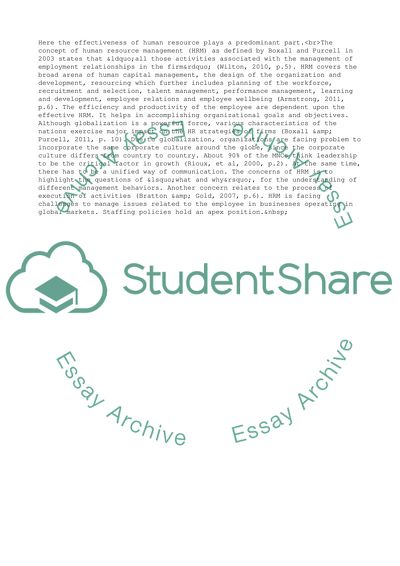Cite this document
(MNCS and Staffing Policies Assignment Example | Topics and Well Written Essays - 3000 words, n.d.)
MNCS and Staffing Policies Assignment Example | Topics and Well Written Essays - 3000 words. Retrieved from https://studentshare.org/management/1789508-critically-evaluate-the-extent-to-which-mncs-different-international-orientations-ieethnocentric-polycentric-and-geocentric-influence-recruitment-and-selection-practiceswithin-their-subsidiaries-include-discussion-of-ways-mnc-hr-professionals
MNCS and Staffing Policies Assignment Example | Topics and Well Written Essays - 3000 words. Retrieved from https://studentshare.org/management/1789508-critically-evaluate-the-extent-to-which-mncs-different-international-orientations-ieethnocentric-polycentric-and-geocentric-influence-recruitment-and-selection-practiceswithin-their-subsidiaries-include-discussion-of-ways-mnc-hr-professionals
(MNCS and Staffing Policies Assignment Example | Topics and Well Written Essays - 3000 Words)
MNCS and Staffing Policies Assignment Example | Topics and Well Written Essays - 3000 Words. https://studentshare.org/management/1789508-critically-evaluate-the-extent-to-which-mncs-different-international-orientations-ieethnocentric-polycentric-and-geocentric-influence-recruitment-and-selection-practiceswithin-their-subsidiaries-include-discussion-of-ways-mnc-hr-professionals.
MNCS and Staffing Policies Assignment Example | Topics and Well Written Essays - 3000 Words. https://studentshare.org/management/1789508-critically-evaluate-the-extent-to-which-mncs-different-international-orientations-ieethnocentric-polycentric-and-geocentric-influence-recruitment-and-selection-practiceswithin-their-subsidiaries-include-discussion-of-ways-mnc-hr-professionals.
“MNCS and Staffing Policies Assignment Example | Topics and Well Written Essays - 3000 Words”, n.d. https://studentshare.org/management/1789508-critically-evaluate-the-extent-to-which-mncs-different-international-orientations-ieethnocentric-polycentric-and-geocentric-influence-recruitment-and-selection-practiceswithin-their-subsidiaries-include-discussion-of-ways-mnc-hr-professionals.


